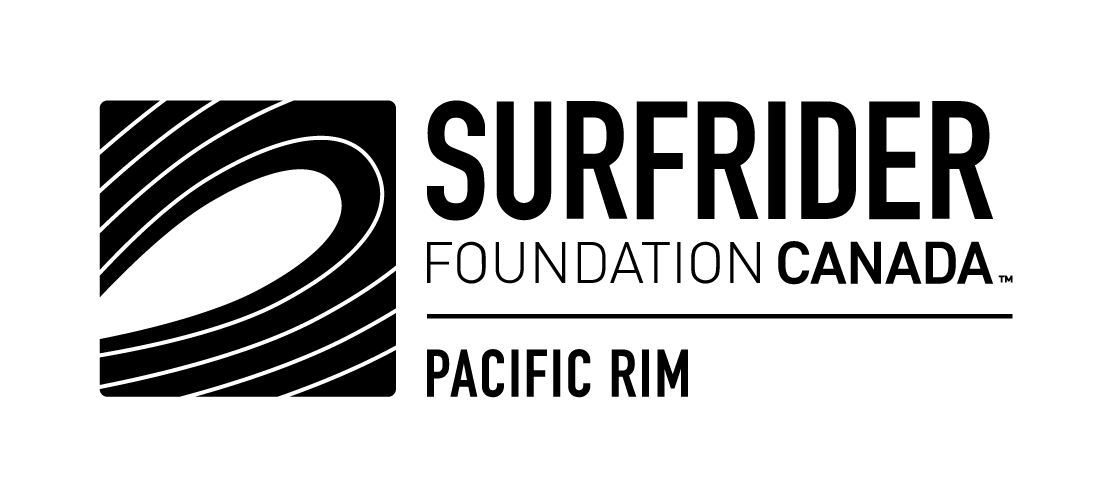Zim Kingston - one month on
Broken ZK container on Palmerston Beach
Last month the MV Zim Kingston spilled more than 100 shipping containers in rough seas off of Vancouver Island. As Canadian Coast Guard fought the fire raging in the crumpled containers left aboard the ship, west coast communities anxiously tracked the floating containers with a sickening sense of déjà-vu; only five years ago, Hanjin lost 35 containers close to where the October 22nd spill occurred and the legacy of their smashed polyurethane lining is still in evidence on west coast beaches today.
Within a week, storm force winds and raging seas had carried the containers over 300km north, where four of them were dashed against the shore, scattering their contents along the remote north western coast of the island. Local cleanup groups and ENGOs like Surfrider Pacific Rim were in close communication with coast guard, Vancouver Island MPs, and the salvage company contracted by the vessel owner, offering our experience and local knowledge to facilitate a rapid response. We waited anxiously as Incident Command navigated a tortuous negotiation process with the responsible parties, all the while knowing that each tide was spreading the debris further and further afield.
On November 3rd, we were tasked by the salvage company to assemble a team to support the remediation efforts. Two days later, in partnership with fellow members of the BC Marine Debris Working Group including Epic Exeo, Living Oceans Society, Ocean Legacy Foundation, and Rugged Coast Research Society, we mobilised a group of 16 trained, highly capable volunteers with decades of combined shoreline cleanup experience.
Styrofoam breaks into tiny pieces impossible to clean up
Traversing log jams and knee-high sea foam, we encountered beaches rimmed with pulverised Styrofoam, long strips of plastic strapping - the type frequently found around sea lions’ necks - tangled amongst the kelp, and a bizarre smell of bouillon from the hundreds of plastic soup sachets strewn along the tide line. We hiked beaches that the Coast Guard had reported full of items just days’ previously, only to find that the King Tides had dragged much of the debris back out to sea. It soon became apparent that items were washing back in over an incrementally wider area with each high tide. We filled bag after bag with kids toys, plastic mats, suitcases, bottles of baby oil, gym equipment, plastic packaging, and a raft of other consumer goods, only to return after the next tide cycle to find more items back on the beach. Less than 10 days after the containers first made land, persistent storms and wave action meant much of their spilled contents had already begun to break into small pieces, and soon would become indistinguishable from the other marine debris that is sadly ubiquitous on our coast.
Most of the items washing up were consumer goods, much of it packaged in Styrofoam. Photo: Alex Lackner
All of this raises key concerns about how the end point of the cleanup will be determined, and how the shipping company will be held financially responsible for the full cost of the cleanup. This is particularly important considering that, to date, only four of the lost containers have washed ashore, meaning approximately 105 are still unaccounted for. Just this week we received reports of container debris on beaches from Haida Gwaii to Clayoquot Sound. If there’s one thing we can be sure of, it is that this issue is not going away.
So, what can we do?
The Hanjin disaster galvanised public support and political will resulting in a unanimous vote to approve M-151, a national strategy to combat plastic pollution. This most recent spill must elicit an even stronger political response.
Whilst this has clearly demonstrated the need for a robust emergency preparedness plan to facilitate a rapid response to incidents of this nature, preventative action must also be taken against future spills.
Persistent storms and wave action has broken up items or embedded them into log jams, making it harder and harder to distinguish from other marine debris.
In the short term, Surfrider Pacific Rim is calling for the manifest of the lost containers to be made public so coastal communities can trace debris washing up along BC shorelines back to this spill. We also request transparency on the full extent of the spread of the debris.
In the long term, we’re advocating for the implementation of a plastics action plan. This must include minimum recycled content requirements for plastic goods and the expansion of Extended Producer Responsibility to both stimulate the plastic recycling economy and incentivise the redesign of consumer products to be truly recyclable. Climate change, marine plastic pollution, and supply chain breakdown are not disparate issues, and investing in a localised circular economy is an essential step towards a sustainable future.
Finally, Motion 151 must be enacted in full, especially the provision of “permanent, dedicated, and annual funding for...community-led projects to clean up plastics and debris” to support creating a multijurisdictional spill response team with First Nations leadership and engagement with the BC Marine Debris Working Group to facilitate rapid emergency response.
What can you do right now?
Report any debris you find that could be related to the container spill to the coast guard (1-800-889-8852)
Assess your own material consumption; as the holiday season approaches, explore ways you can consume less and inspire others to do the same
Connect with local ENGOs (like Surfrider) and support their advocacy work!
Volunteers from Epic Exeo, Living Oceans Society, Ocean Legacy Foundation, Rugged Coast Research Society, and Surfrider Pacific Rim assemble in Holberg to respond to the spill. Photo: Alex Lackner





